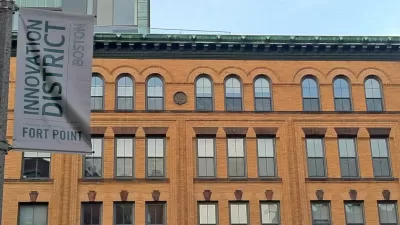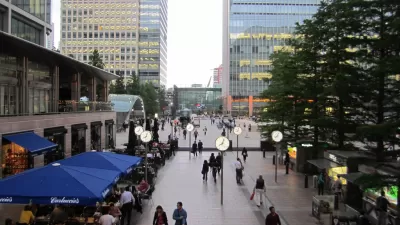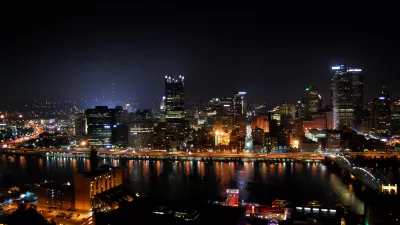Last year, the "innovation district" rose to prominence as a way to describe urban knowledge economy epicenters. This report from Bruce Katz and Brookings describes how the phenomenon continues to evolve.

Unlike the suburban office parks associated with tech firms, today's innovation district is central and urbane, boasting an equal spread of MacBook entrepreneurs and baristas. According to this article, there's not a lot to complain about. "The growing application of 'open innovation'—where companies work with other firms, inventors, and researchers to generate new ideas and bring them to market—has revalued proximity, density, and other attributes of cities."
The phenomenon has been quick to spread. "A simple Google search will reveal the extent to which the language of 'innovation districts' (or 'innovation quarters,' 'innovation neighborhoods,' or 'innovation corridors') has rapidly permeated the field of urban and metropolitan economic development and place-making.
Several observations from the article about how innovation districts are evolving:
- In some cases, the label "innovation district" has been misapplied by regions seeking to drive up demand and attract high-value enterprises.
- Innovation districts aren't necessarily yoked to existing knowledge centers, i.e. university campuses. This is a good thing.
- Some ostensible innovation centers need to become friendlier to networking. "When designed and programmed well, a district's public spaces facilitate open innovation by offering numerous opportunities to meet, network, and brainstorm [...] districts anchored by medical campuses have significant work ahead."
- Intermediaries (cultivators, incubators, accelerators) are becoming crucial enablers for collaboration between firms.
- Innovation districts must "ensure that nearby neighborhoods and their residents connect to and benefit from new growth opportunities in innovation districts and beyond. Scaling such efforts will be critical in the years to come, as the success of these districts will be defined in large part by their broader city and regional impacts."
FULL STORY: One year after: Observations on the rise of innovation districts

Maui's Vacation Rental Debate Turns Ugly
Verbal attacks, misinformation campaigns and fistfights plague a high-stakes debate to convert thousands of vacation rentals into long-term housing.

Planetizen Federal Action Tracker
A weekly monitor of how Trump’s orders and actions are impacting planners and planning in America.

Chicago’s Ghost Rails
Just beneath the surface of the modern city lie the remnants of its expansive early 20th-century streetcar system.

Bend, Oregon Zoning Reforms Prioritize Small-Scale Housing
The city altered its zoning code to allow multi-family housing and eliminated parking mandates citywide.

Amtrak Cutting Jobs, Funding to High-Speed Rail
The agency plans to cut 10 percent of its workforce and has confirmed it will not fund new high-speed rail projects.

LA Denies Basic Services to Unhoused Residents
The city has repeatedly failed to respond to requests for trash pickup at encampment sites, and eliminated a program that provided mobile showers and toilets.
Urban Design for Planners 1: Software Tools
This six-course series explores essential urban design concepts using open source software and equips planners with the tools they need to participate fully in the urban design process.
Planning for Universal Design
Learn the tools for implementing Universal Design in planning regulations.
planning NEXT
Appalachian Highlands Housing Partners
Mpact (founded as Rail~Volution)
City of Camden Redevelopment Agency
City of Astoria
City of Portland
City of Laramie




























